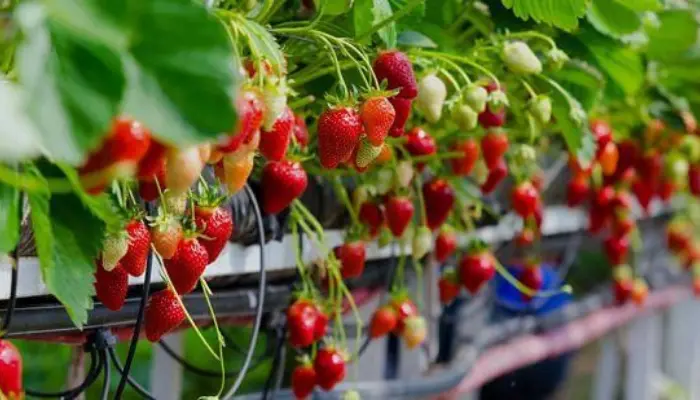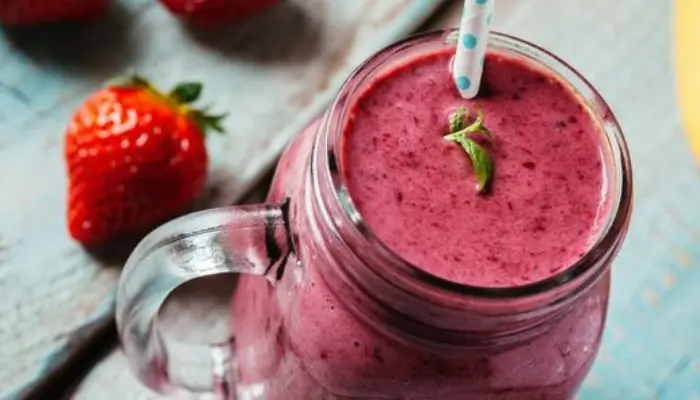Grow Best Strawberry Mint | Planting ,Care & Uses
Grow Strawberry Mint is like discovering a secret garden where sweet strawberries and fresh mint come together. It’s about yummy flavours, pleasant smells, and pretty plants.
Imagine bright green leaves that emit a pleasant, sweet strawberry scent when crushed—like a fragrant garden treat.
Taking care of Strawberry Mint is like having a fun project where you give it the right amount of sun, water, and love and then watch it grow into something beautiful and tasty. Let’s learn how t make our own little Strawberry Mint paradise!”
Strawberry Mint Plant
The Strawberry Mint plant is a charming herb that combines the sweet flavour of strawberries with the refreshing aroma of mint. Its vibrant green leaves and delicate pink flowers make it an attractive addition to any garden or indoor space.
To thrive, the Strawberry Mint plant needs soil that drains well, partial sunlight, and moderate watering. With regular pruning, it maintains a compact, bushy form, ideal for harvesting its flavorful leaves.

Whether used fresh in culinary dishes, brewed into teas, or infused into beverages, the Strawberry Mint plant offers a delightful fusion of taste and fragrance, making it a prized asset for any herb enthusiast.
Developing Strawberry Mint Plant
Choosing a Suitable Container: The correct container is essential for the health of your Strawberry Mint plant. Opt for a pot or container minimum of 8-10 inches deep with runoff holes at the bottom. This ensures proper drainage and prevents waterlogging, which can harm the plant.
Selecting the Right Soil: Use a well-draining potting mix rich in organic matter. An equal amount of potting soil, perlite, and compost are ideal for Strawberry Mint plants.
Planting the Seeds or Seedlings: You have two options for starting your plant – seeds or seedlings. If planting seeds, place them approximately 1/4 inch deep into the soil and sligtly cover them.
If you have seedlings, carefully transfer them into the ready container without disrupting the roots excessively.
Watering: Keep the soil consistently moist, but avoid overwatering as it can lead to root rot. Water the plant when the top inch of soil feels dry.
Sunlight: Understanding the importance of the sun for your Strawberry Mint plants is critical. Place the container where the plant will receive partial to full sunlight. Strawberry Mint plants thrive in sunlight but can tolerate partial shade. By providing the right amount of sun, you’re ensuring your plant’s vitality.
Fertilizing: Feed your plant with a balanced liquid fertilizer every 4-6 weeks during the growing season (spring and summer). Follow the instructions on the fertilizer package for proper application.
Pruning: Regular pruning is essential for the health and appearance of your Strawberry Mint plant. To encourage bushy growth, pinch off the tips of the stems and remove any yellow or dead leaves.
Harvesting: Once your plant is well-established, usually after 2-3 months, you can start harvesting the leaves. Use scissors to snip off the leaves as needed, leaving some on the plant to continue growing.
Pests and Diseases :Be vigilant for typical pests such as spider mites and diseases like powdery mildew fungus. Treat any issues promptly with insecticidal soap or neem oil, and avoid overhead watering to prevent fungal diseases.
Winter Care (Optional): If you live in a region with cold winters, consider bringing your Strawberry Mint plant indoors or providing protection from frost. Alternatively, you can treat it as an annual and replant in the spring.
Culinary Intents Of Strawberry Mint
Strawberry mint, also known as “Mentha spicata,” brings a unique blend of flavors, making it a versatile cooking herb. Let’s explore its culinary uses:

- Refreshing Twist: Strawberry mint brings an incredible, minty flavor with a delightful hint of sweet strawberry. It’s a perfect ingredient to add a refreshing twist to your drinks and dishes. Beverage Boost: Use strawberry mint to flavor water, lemonade, or tea. Its refreshing taste pairs perfectly with fruity beverages, adding a hint of sweetness.
- Salad Spruce-Up: Chop strawberry mint over fruit or green salads. Its aroma enhances the taste and makes salads more vibrant.
- Dessert Delight: Sprinkle chopped strawberry mint leaves over desserts like ice cream or fruit tarts. Not only does it enhance the flavor, but it also adds a touch ofaesthetic attraction, making your desserts look more enticing.
- Versatile Pairing: Strawberry mint goes well with fruits like strawberries, raspberries, and citrus. It also complements savory dishes like grilled chicken or fish.
- Infused Goodness: Use strawberry mint to infuse syrups, sauces, or dressings. It adds a refreshing flavor to sweet and savory dishes alike.
- Cocktail Kick: Muddle strawberry mint in cocktails like mojitos for a refreshing kick. It’s also great in mocktails for non-alcoholic options.
Troubleshooting
As a strawberry plant enthusiast, I’ve encountered various challenges such as low fruit production, disease outbreaks, pest infestations, soil issues, environmental stress, and weed competition. These issues can significantly affect the growth and yield of my beloved strawberries.
When faced with low fruit production,: I take a practical approach. First, I ensure proper pollination by creating enough space for bees to work their magic. Then, I test the soil and apply the right balance of fertilizer to address any nutrient deficiencies.
Regular pruning of runners and old leaves also helps stimulate flower and fruit development. These simple, yet effective, strategies have proven to be a game-changer for my strawberry plants.
Dealing with diseases: like powdery mildew and gray mold can be a real challenge. But fear not; I’ve found some strategies that work wonders. I’ve kept these diseases at bay by rotating my crops, maintaining good sanitation practices, and spacing out my plants properly.
Applying fungicides preventively during critical growth stages has proven a reliable defense. With these strategies in your arsenal, you can feel confident protecting your strawberry plants.
Pest Troubles: Pesky pests like aphids and spider mites can damage my strawberry plants and reduce fruit yield. I closely monitor my plants for signs of infestation and use natural methods, such as insecticidal soaps or introducing beneficial insects, to manage pest populations effectively.
Soil Issues: Poor drainage or pH imbalance in the soil can stunt the growth of my strawberry plants. I conduct regular soil tests to identify problems and improve the soil with organic matter like compost. This helps improve soil structure and fertility, ensuring my plants have the nutrients they need to thrive.
Environmental Stress: Extreme weather conditions can stress my strawberry plants, causing wilting or fruit damage. I water my plants regularly during dry spells and provide shade during heat waves to protect them from excessive sun exposure. Choosing strawberry varieties suited to my local climate also helps them withstand environmental stressors.
Weed Competition: Weeds can compete with my strawberry plants for resources like water and sunlight. To combat this, I mulch around my plants to suppress weed growth and hand-weed or cultivate between rows regularly to keep weeds in check without harming my strawberries.
Fruit Deformities: If I notice my strawberries are coming out distorted, it could be due to poor pollination or irregular watering. Ensuring consistent moisture levels and encouraging pollinator activity through bee-attracting flowers or hand pollination can help improve fruit shape and size.
How to grow strawberry mint?
To grow strawberry mint, choose a sunny spot with well-drained soil. Keep the soil moist, but not soggy, and fertilize lightly during the growing season. Prune regularly for bushy growth and harvest leaves for culinary use as needed.
Does Strawberry mint like sun or shade?
Strawberry mint prefers partial shade to full sun. It thrives in a location with morning sunlight and afternoon shade, though it can tolerate some direct sunlight. Providing some shade during the hottest part of the day helps prevent the leaves from scorching and maintains the plant’s health and vigor.
What is strawberry mint good for?
Strawberry mint is good for flavoring drinks, garnishing dishes, and adding fragrance to potpourri.
What makes mint grow faster?
Mint grows faster with ample sunlight, well-draining soil, regular watering, and occasional fertilization. Additionally, pruning mint regularly promotes bushier growth and encourages new shoots, leading to faster expansion of the plant.
Can mint grow indoors?
Yes, mint can grow indoors in containers with adequate sunlight and regular watering.

